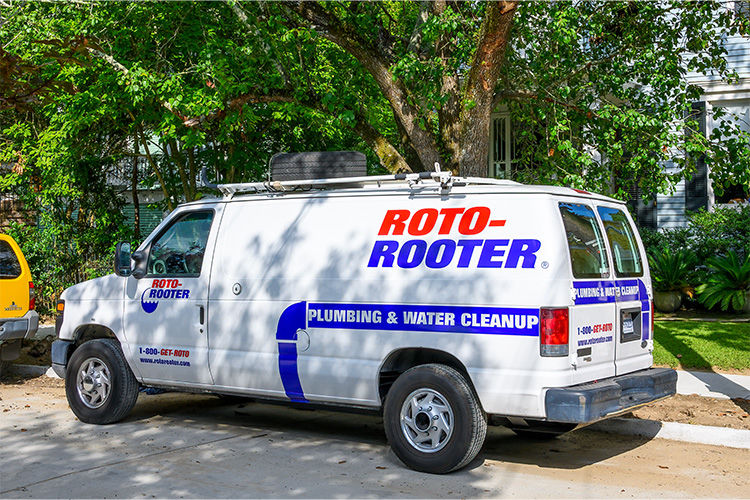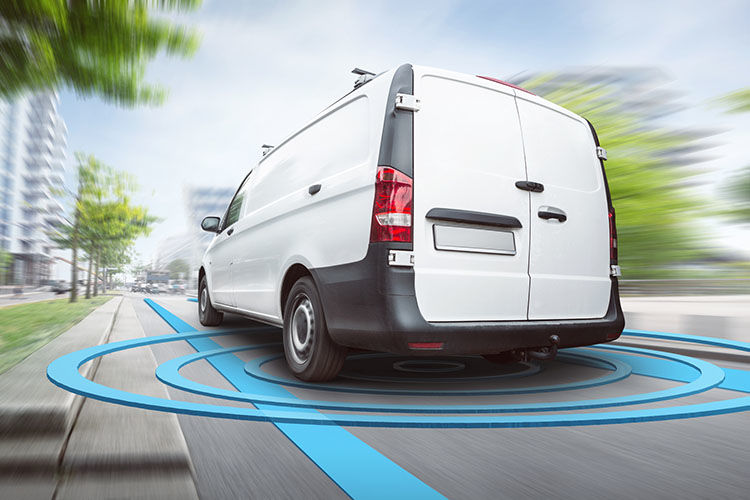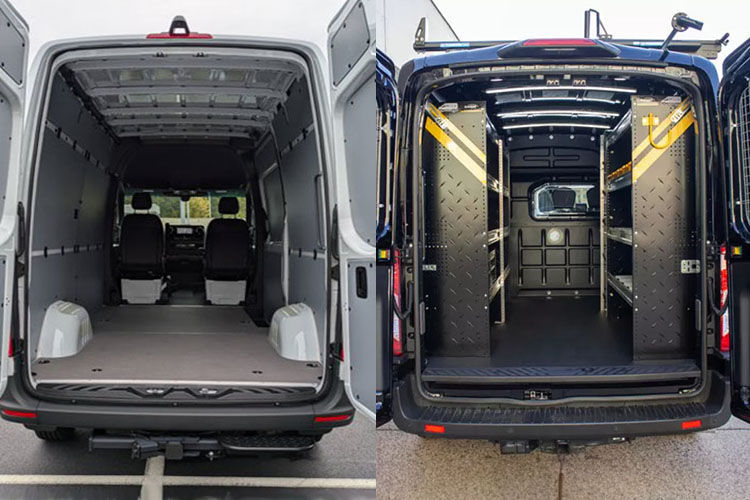Fleet Managers: Listen to Your Service Technicians


Fleet Managers: Listen to Your Service Technicians
Purchasing vehicles for a fleet is challenging. The responsible party has multiple considerations: timing, budget, and vehicle fit with the rest of the fleet. In the midst of estimates, spreadsheets, and software, sometimes a key factor can be overlooked: what works well in the field for technicians? There are both quantitative and qualitative data points to consider.
- Collaborate with your technicians to be sure they have everything they need.
- Efforts to save minutes each day can save dozens of hours each year.
- Look out for employee health with beneficial additions to your fleet and their work will benefit as well.
- Technician feedback and hard data can boost employee morale and positive business perception.
Fleet Managers Need Data

Fleet managers tend to operate out of a home office. Technicians are the "boots on the ground." They are the ones crawling in and out of a low-roof van on their knees. They are reaching up multiple times a day to grab a ladder off a materials rack. They are getting parts and tools in and out of compartments several times a day.
Work vehicle features and prices may look good in a brochure or on a website, but the application of the vehicle and accessories may not function well in the field. Collaborating with your technicians is a great way to get valuable input into what a crew needs. Listening for what works well--or doesn't work well--on the job site can inform decisions about the next fleet purchase.
A well-functioning truck or van helps your business operate efficiently and effectively. For example, Adrian Steel’s Ladder Keeper carries ladders inside vans and Masterack ErgoRack carries ladders outside the vehicle. Even more subtle features, like grab handles and non-skid steps on the back of vehicles, are great for technicians working in wet conditions. Ergonomics is a hot-button topic for many good reasons. When technicians have easy access to tools, they can be safer and more productive.
Shop Upfitted Cargo Vans for Sale
A Tale of Two Plumbers: Gary and Oscar
 There are financial considerations as well. Imagine two plumbers: Gary and Oscar. Both have similar jobs but work for competing plumbing companies. Both need to access a particular type of part from their respective vehicles an average of 3 times a day.
There are financial considerations as well. Imagine two plumbers: Gary and Oscar. Both have similar jobs but work for competing plumbing companies. Both need to access a particular type of part from their respective vehicles an average of 3 times a day.
Because of the poor upfit configuration, it takes Gary an average of 3 minutes to acquire those parts: large doors have to be swung open with a wide area, the equipment has to be moved aside if it’s shifted on the road, and parts are not tightly organized. On the other hand, Oscar has a better-designed vehicle. It only takes him 1 minute to get those parts every time.
Using an average of 250 working days a year, it's simple math to see what the difference makes to the two businesses using some conservative figures:
| Gary | Oscar |
250 days x 3 times/day to get parts x 3 minutes to find parts 2,250 minutes | 250 days x 3 times/day to get parts x 1 minute to find parts 750 minutes |
The difference in time between Gary and Oscar is 25 hours per year. Let’s further suppose there are 10 vehicles in each companies’ fleets, all with the same specifications. Oscar's company has an “extra” 250 hours in a year! What could Oscar's company accomplish with that extra time? Take on more jobs? Reduce management stress? Gain a competitive advantage?
Managing a Fleet for Technicians’ Benefit
Of course, the differences aren’t only mathematical. If a technician can get one set of parts easily, it's likely they will be more efficient all day long. Ideally, those benefits continue all day long. With the right vehicle, they may not have to search for a large parking area so large doors can swing open, or may be able to avoid kneeling in the back of their rig, thus saving wear-and-tear on their knees or back.
"For many technicians, the vehicle is a workshop, mobile inventory center, break room, mobile office, and reflection of the business."
An ounce of empathy for technicians goes a long way in designing a fleet. For many technicians, the vehicle is a workshop, mobile inventory center, break room, mobile office, and reflection of the business. It is essentially a technician’s "home" for 250 days of the year. Taking that into consideration and making thoughtful additions to your fleet vehicles is an important way to show concern for your technicians, and ultimately can improve employee morale and increase employee retention.
A well-designed vehicle that considers your technicians supports a healthy employee outlook of their work and employer. There are plenty of business journal articles that describe the costs and problems of employee turnover. If you consider some basics like shelving, bins, racks, and load placement, you can support a technician’s workflow for maximum productivity, safety, and longevity with your business.
Shop Upfitted Cargo Vans for Sale
Fleet Managers Influence Business Perception
 You want your technicians to state to other tradespeople, customers, and members of the business community: "Look at my new truck! It's got remote start, a great way to store my tools, and this nice WEATHER GUARD ladder rack." That will help foster a positive view of your business. Certainly, it's much better than a technician who says: "Look at this truck. It's even worse than what I had before. Wish they asked for my opinion before they bought it...."
You want your technicians to state to other tradespeople, customers, and members of the business community: "Look at my new truck! It's got remote start, a great way to store my tools, and this nice WEATHER GUARD ladder rack." That will help foster a positive view of your business. Certainly, it's much better than a technician who says: "Look at this truck. It's even worse than what I had before. Wish they asked for my opinion before they bought it...."
Of course, a fleet manager will always be constrained with the budget. A technician's opinion and preference can't solely dictate the final vehicle and accessory choice. However, by attentive listening and a little extra research, a savvy fleet manager may be able to maximize the budget and get some "wins" for the technician out in the field. Even a relatively small win--like power windows--can be a nice way to demonstrate to your technicians that you care about them.
Fleet management is like a puzzle. It’s that challenge that is part of the delight for fleet managers. Inputs from multiple sources need to be aligned to make a successful purchase. In working with all the data, a human element accompanies the hard numbers.
Published on: August 15, 2019 2026 Commercial Trucks and Vans: What’s New from Ford, GM, and Ram
2026 Commercial Trucks and Vans: What’s New from Ford, GM, and Ram The Value of Work Ethic: Comvoy.com Promotes Mike Rowe's Work Ethic Scholarship Program
The Value of Work Ethic: Comvoy.com Promotes Mike Rowe's Work Ethic Scholarship Program Best Plumbing Trucks and Vans for Plumbers
Best Plumbing Trucks and Vans for Plumbers What Commercial Fleets Need to Know About ADAS Before Their Next Vehicle Purchase
What Commercial Fleets Need to Know About ADAS Before Their Next Vehicle Purchase How Efficient Upfit Planning Amplifies the ROI of Your Commercial Vehicle Upfit
How Efficient Upfit Planning Amplifies the ROI of Your Commercial Vehicle Upfit







